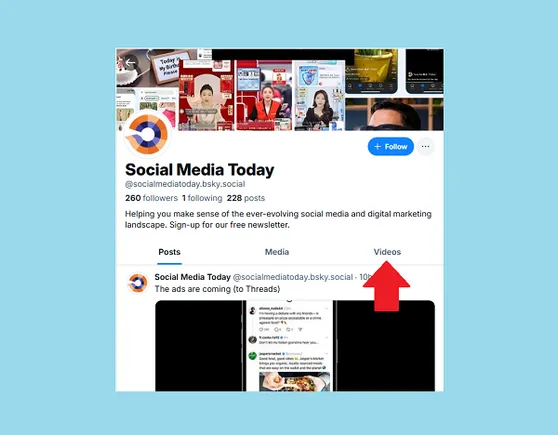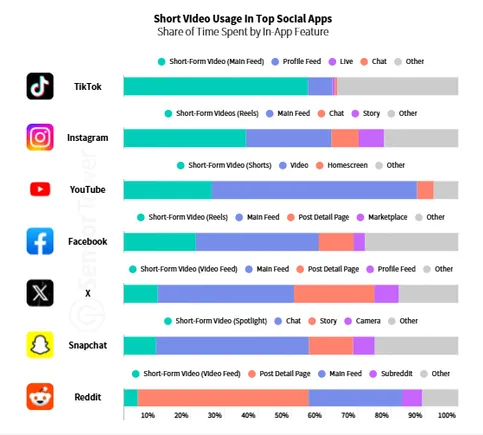What insights is your company missing because your teams don’t fully understand the data they rely on? In a world where data-driven strategies are key, brands must enable more team members to access, comprehend and use the data that fuels success. Here’s how to foster a culture of data literacy and accessibility that drives meaningful marketing results.
Building data literacy across teams
Data literacy seems to be mentioned more often in conversations, but how often do companies actively work to increase it?
In reality, most data is managed by a relatively small number of data scientists and other team members are sent reports that assume they understand terms such as p-value. Spoiler alert: They very well might not.
Where gatekeeping goes wrong
If only a small group in your organization thoroughly understands the data being reported on, your marketing team’s collective potential is compromised from the start. You’re then left with a bottleneck where every meaningful question about campaign performance, customer behavior or ROI must pass through the same overworked few — the data gatekeepers.
This reliance slows down decision-making and creates a culture of silos and dependency, which is hardly ideal in a fast-paced marketing world that demands agility and collaboration. In most cases, the data specialists aren’t to blame, as there are likely many decisions made over the years that have created these silos. Yet, there is no time like the present to break these silos down.
Making data accessible
If you want to democratize understanding of your reporting, start by making data literacy accessible and interesting. Provide multiple ways to educate your team, such as workshops or adding clear annotations to reports. Focus less on avoiding repetition and more on reaching everyone, keeping in mind their different learning styles.
Avoid dense slides filled with numbers and formulas in your reports and opt for interactive, relatable content. This is where you can train your marketing teams how to answer questions that directly impact their work, including:
- Which channels are driving conversions?
- What’s the ROI of this campaign?
- Why is this audience segment suddenly buying five times more toothpaste than the average customer?
Even better, take advantage of tools and hands-on exercises that allow team members to interact with results from their campaigns in real time. Create opportunities to let them discover patterns, identify outliers and make connections for themselves, reinforcing their learning.
Building a faster, more knowledgeable team
When marketers understand the data they use, great things happen. Teams work better together, and no one has to wait on others for more reports. It also boosts morale when employees can find and understand the information they need, often leading to new discoveries.
Data literacy isn’t optional; it’s a key tool for staying competitive. When your team relies on a few experts to handle data analysis, it limits your marketing team’s overall performance.
Dig deeper: Breaking down data silos: A practical guide to integrated marketing data
From numbers to narratives: Turning data into meaningful insights
Most marketing reports are full of information, but they are less often engaging or even easy to understand. Packed with numbers, charts and technical terms, they don’t tell a clear story. The issue isn’t the data but the lack of context and explanation that highlights the importance of the numbers.
Rethinking your reports
Without context or structure, charts showing seemingly important information are like unedited films. The raw footage may exist and be accessible to many, but it lacks meaning and is difficult to follow.
Deciphering its meaning is an additional, time-consuming task for already overburdened teams. Reports that simply present numbers without interpretation force teams to perform unnecessary analysis, slowing progress and potentially causing key insights to be missed.
Insights that are not clearly articulated can be overlooked or misunderstood. A trend line that should inspire action might be dismissed as merely a visually appealing chart. If your data isn’t telling a story, it’s just meaningless noise.
Dig deeper: 4 reporting essentials to streamline business intelligence
Telling stories with data
Storytelling isn’t the exclusive territory of the creative team working on an upcoming ad campaign. It can be a useful way to transform complex data into something relatable, understandable and actionable, with real consequences. Begin by framing your data like a story:
- Who are the characters? List the most important metrics or trends that are relevant.
- What is the plot? Highlight the actions or events driving those metrics.
- Where is the conflict? Point out challenges or areas needing improvement.
- What is the conclusion? Recommend actions or solutions based on the data.
As an example, instead of simply showing a line chart of declining email open rates, tell the story:
- “Our email open rates have dropped 15% over the last quarter, primarily due to a change in subject line strategy. Here’s what we’ll try next: A/B testing three new styles to re-engage subscribers.”
This gives you the trifecta — context, conflict and call to action — all in one.
Visuals are key as well. Use data visualizations to reinforce your story, not complicate it by keeping them clean, intuitive and focused on the narrative you’re trying to convey. A well-placed annotated chart or a simple infographic can do wonders for comprehension.
Dig deeper: How to put marketing data into meaningful context
Data storytelling simplifies complex information and makes it actionable. It helps your team see how their work fits into the bigger picture and make changes in areas like budget allocation, customer segmentation or strategy. Without a story, data is like a map without a key — useful only if you’re willing to decipher it yourself.
Creating accessible, explainable reporting
Many reports simply flood teams with charts and data without context, making important information hard to access. When metrics are buried in jargon, unfiltered data or unclear visuals, the reports become ineffective for those who need to understand them.
This creates frustration and divides the team into those who can access the information and those who can’t. In a collaborative marketing environment, it’s crucial that everyone can understand key insights and contribute their ideas. The goal should be to make insights clear and actionable, allowing all team members to engage, regardless of their role.
Opt for user-friendly, understandable reports
If your reports are hard to understand without a guide, they’re not effective. The goal is simplicity and clarity. Here’s how to improve them.
Explain the metrics clearly
Don’t assume everyone knows what CTR, CAC or LTV stands for (or what they mean in context). Include brief, plain-English definitions for key metrics within the report or as an easy-to-reference glossary.
- Example: Instead of just listing “Churn Rate,” add: “Percentage of customers who stopped their subscription this quarter (lower is better).”
Use consistent formatting
Ensure reports utilize standardized layouts, fonts and colors to make them more visually intuitive. Don’t underestimate the power of uniformity. It reduces the mental load needed to understand new reports. Also, consider accessibility factors like color contrast and font sizes that accommodate all team members.
Highlight key takeaways
Don’t make people hunt for insights. Include a summary at the top of each report, outlining the most critical findings. Think of it as the TL;DR for busy marketers.
- Example: “This month’s campaign performance: +10% in social engagement, -5% in email open rates. Action needed: Refresh email subject lines to reverse the decline.”
Enable interactive options
If possible, make your reports interactive. Tools like Tableau or Power BI allow users to explore the data they care about most without wading through irrelevant details.
Creating a data-literate marketing team
When reports are easier to understand, they become helpful rather than a burden. Accessible reports allow for better participation in strategy and decision-making, benefiting your team, business and customers.
Your goal should be to create reports that are insightful, actionable and engaging. Identify reports that are ignored or misunderstood and improve or remove them. In today’s fast-paced world, there’s no room for reports that don’t deliver valuable insights.
Contributing authors are invited to create content for MarTech and are chosen for their expertise and contribution to the martech community. Our contributors work under the oversight of the editorial staff and contributions are checked for quality and relevance to our readers. The opinions they express are their own.

























































![How Will AI Impact the Global Workforce? [Infographic] How Will AI Impact the Global Workforce? [Infographic]](https://imgproxy.divecdn.com/vhdGY5213MhIJV6-NnwNGwlYkeRCW5mkaDQGgpKM3Qs/g:ce/rs:fit:770:435/Z3M6Ly9kaXZlc2l0ZS1zdG9yYWdlL2RpdmVpbWFnZS9haV9qb2JzX2luZm9fMi5wbmc=.webp)

![LinkedIn Shares Data on In-Demand Skills for Marketers [Infographic] LinkedIn Shares Data on In-Demand Skills for Marketers [Infographic]](https://imgproxy.divecdn.com/zMbngFHDMAQdOuk7-FK5eSqQ-bYj9Kyqki-xmPgH4I8/g:ce/rs:fit:770:435/Z3M6Ly9kaXZlc2l0ZS1zdG9yYWdlL2RpdmVpbWFnZS9saW5rZWRpbl9mYWxsX2pvYnNfb3V0bG9vazIucG5n.webp)







